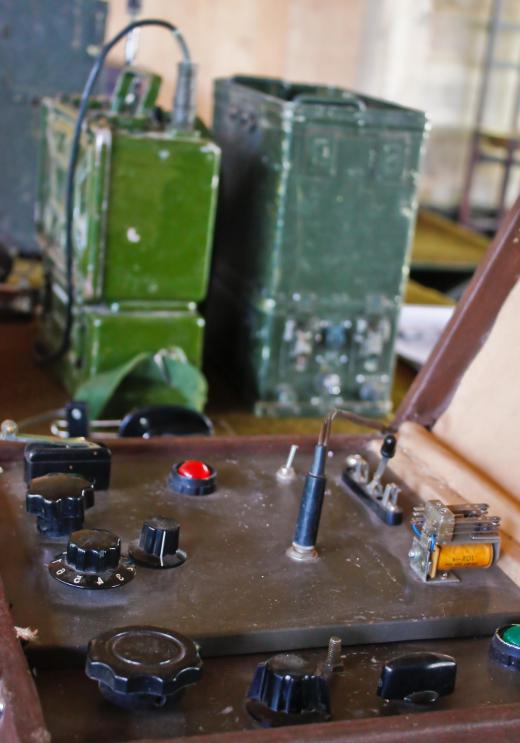What Is Signal Reflection?
Signal reflection is the process of bouncing a signal from a medium that does not totally absorb it. It may occur in copper cables for electrical signals, and in optical fiber for laser or optical signals. Signal reflection may also occur in outdoor metallic surfaces for electromagnetic (EM) waves. The EM waves travel through most open spaces and are not visible.
The study of signal reflection is used in specialized applications. Signal as sound may be reflected by a rigid surface and return to a receiver as a sound navigation and ranging (SONAR) signal. The ground-penetrating radar makes use of the principle that different radio frequencies and different ground materials will produce different amounts of signal absorption and reflection. In impedance matching, the goal is to make sure that most of the signal reaches the destination or load. The source impedance usually has to match the destination or load impedance for a given sub-band of radio frequencies.

In analog transmission cables, signal reflection is experienced as an echo when there is mismatch in the audio. Most of the issues in audio transmission have been resolved by using digitized audio in the form of Internet protocol data packets. Any signal reflection will be seen as data errors and eliminated with error correction schemes. Crosstalk, which used to be the unwanted induction of one analog signal from one cable to another, is also eliminated by using digital audio like the voice over Internet protocol (VoIP) packets in a digital subscriber line.

The Bergeron diagram shows the resulting voltages and currents when reflected electrical energy combines with the incident energy. For best signal integrity, there should be minimal reflection, which is achieved by impedance matching. In some cases, the addition of resistive components that absorb electrical energy may totally eliminate reflection, while in other cases complex impedances formed by the series-parallel combinations of inductors and capacitors may provide the solution. The presence of distributed inductance and capacitance that is dependent on frequency makes the design of good impedance matching circuits very challenging.
Other specialized signal reflection methods include optical ranging where timed beam of light is allowed to reflect to a ranging target. Given the speed of light and the time it takes to receive the reflection, the distance to target can be computed. In radio detection and ranging (RADAR), the target reflects radio signals when the radar equipment sends a burst of radio frequency. The equipment waits for any reflected signal and computes the distance based on the delay between the transmission of radio frequency burst and reception of reflected signal, and the speed of radio waves in air.
AS FEATURED ON:
AS FEATURED ON:












Discuss this Article
Post your comments